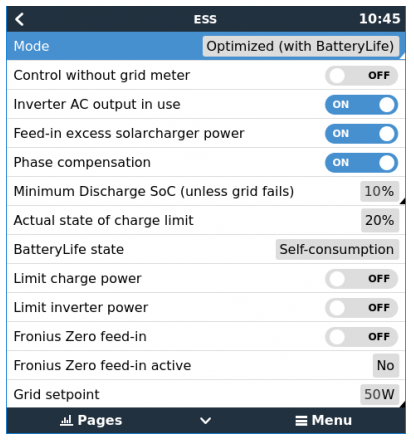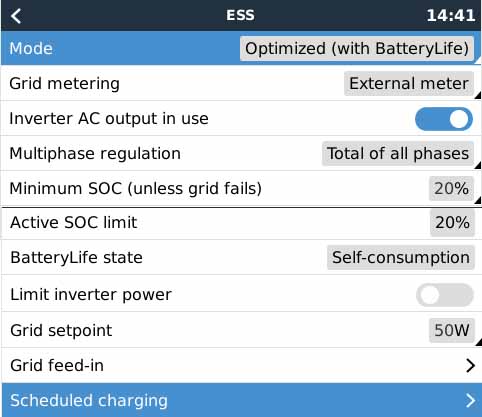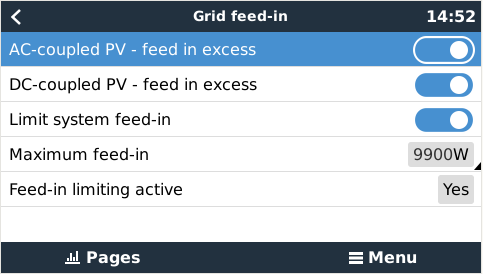I found this statement in the ESS Manual.
https://www.victronenergy.com.au/media/pg/Energy_Storage_System/en/configuration.html
4.3.4. Feed-in excess solar charger power
Set to 'On' to make the solar charger always operate at its maximum power point. The first priority is powering the loads, and the second priority is to charge the battery. If more power is available when those two priorities are met, then that power will be fed to the utility grid.
Please note that when enabling this option, the DVCC charge current limit configured under Settings → Limit charge current won't be active. The solar charger will operate at full power for maximum feed-in into the grid. It's advisable to configure a safe limit on the solar chargers when used with a small battery bank.
In my system when, in ESS, I turn "DC-coupled PV - feed in excess" ON, I still have the DVCC option "Limit charge current" active.
Is ESS manual in error?



